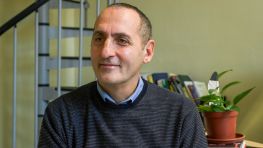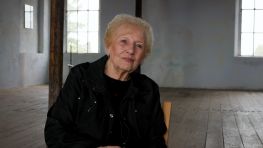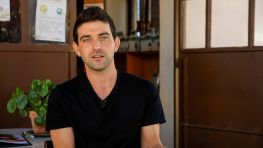
Stefano Tiraboschi
From university classrooms to organic rice fields.
Stefano Tiraboschi, born in 1984, originally from the Lombard municipality of Rho, after graduating in agricultural science and technology from Milan begins his career in conventional farms.
The challenge begins when Maria Paola di Rovasenda proposes to him to take care of her rice farm and to refine the technique, then only sketched out, of sowing in herbage, for the organic cultivation of rice. Stefano takes up the challenge as an opportunity to continue and evolve the research path started in the classrooms of his university. In the academic field, little space had been reserved for techniques and the opportunity to create organic crops, so the challenge facing Stefano was really demanding.
Not being able to count on a specific preparation Tiraboschi adopts an empirical method in the field: attempts with positive results alternated with failures to consolidate a series of techniques and practices. The centrality of the human element, of the ability to read and interpret the signs that nature shows us, is fundamental. All actions are preventive, we hardly ever intervene on the problem, so it is extremely important to be far-sighted in your actions.
Video table of contents
- From Rho to Rovasenda.
- From training based on animal husbandry to work on rice.
- the most exciting professional challenge arises from a sketch of organic farming technique.
- The biological at the university was seen "like smoke in the eyes".
- The human element, the sensitivity in organic cultivation. There is no one-size-fits-all method.
- In Bio we prevent, we work over a long time.
- The relationship with colleagues.
- The relationship with friends who do "conventional".
- Sowing is a delicate moment. There are many variables dealing with a living world that has its own rules and constantly adapts to the climate.
- Managing the water in the paddy field: the cold water of the Baraggia.
- The water cycle with the Bio method.
- The flowering of rice.
- From mom's Sicilian arancini to my risottos.
- The satisfaction of offering my daughters healthy food.
- Consumer tastes are changing and rice varieties are changing.
- Biodiversity in rice is the result of research: ancient varieties compared with modern ones.
- Rotations in organic rice cultivation.
Interview information
Country: IT
Region: Piemonte
City: Rovasenda
Locality: Cascina Teglio
Stefano Tiraboschi
Date of birth: 06-10-1984
City: Rho
School: University
Profession: Farmer
Languages: Italiano
Document by: Luca Ghiardo
Video by: Luca Ghiardo
Created: 11-05-2021
Questo video fa parte del seguente archivio
Rice stories
Rice stories
Food is a fundamental resource for man and his health, both through the supply of nutrients and the ability to embody traits of human culture that play a leading role in our well-being.
Over time, each territory has built original ways in which to relate to the fruits of its land, enriching them with rituals, symbolic meanings and culinary customs. Much of these relationships have been lost following the years of the economic boom, with the exodus from the countryside to urban centers, with the advent of agriculture for mass production and ultimately with the globalization of markets and the consequent impoverishment of the heritage of biodiversity and ethnodiversity.
The purpose of this archive is to collect evidence relating to the main rice production area in Europe, that is the Po Valley, and to investigate, through the analysis of textual sources and testimonies collected in the field, both what survives of this heritage, and the ways in which which has evolved and reached us, paying particular attention to the explicit and implicit links that bind food and health.






